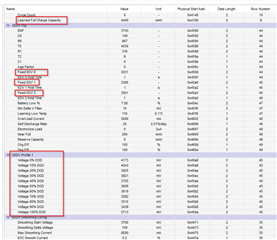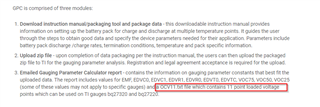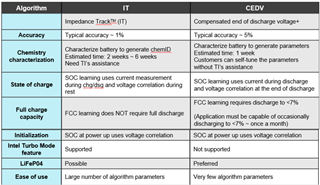Other Parts Discussed in Thread: GPCCEDV, BQSTUDIO
Hi,
I'm trying to determine the CEDV coefficients for a BQ4050 CEDV Gas Gauge on a custom board (based on TI's reference design) with two Lithium Ion (LG INR18650-MJ1 3500mAh) cells placed in series.
I took several measurements for which the GPC report stated:
"Accuracy Error: Deviation is so high that it is most likely due to anomaly in the data"
reporting very large deviations > 50 % SOC error.
On the other hand, I have also received a positive GPC report with an acceptable deviation < 0.1 % SOC error.
I have picked two measurements for comparison one with this very high SOC error and the one with the low SOC error (please see attachment). I cannot see any significant differences between these two measurements.
What could cause this divergence in SOC error between these two measurements?
Background information:
At the moment I do not have access to a temperature chamber. Therefore, in order to gain experience with the measurement procedure as well as to make it right the first time while having access to a temperature chamber, I decided to take one measurement at ambient temperature and at a typical high load for my application and copy paste it for all 6 measurements required by the GPCCEDV tool (as proposed here: https://e2e.ti.com/support/power-management-group/power-management/f/power-management-forum/382140/bq78350---cedv-coefficients-for-room-temp-only).
In addition, I do not measure the temperature of the cells directly with external thermistors but use the internal temperature sensor, as I am not interested in accurate CEDV coefficients for a high temperature range at the moment.
Thank you in advance.
Tom





